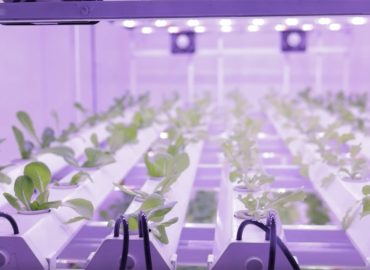ZipGrow Greenhouse System Review
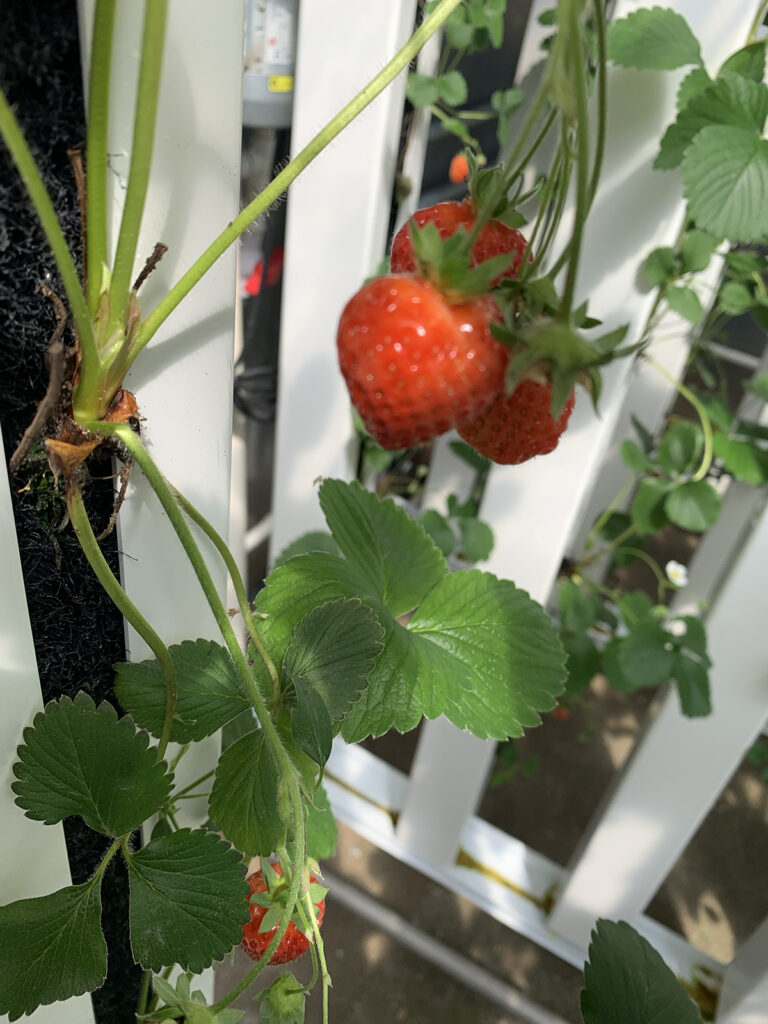
ZipGrow Greenhouse System Review
Vertical Hydroponic Greenhouse Farming
For our ZipGrow greenhouse system review we are growing several varieties of everbearing strawberries (day neutral) and Genovese basil in a CEA (controlled environment agriculture) greenhouse. At grozine.com we have operated a variety of vertical hydroponic and aquaponic systems over the years, typically as DIY set-ups while utilizing professional grade components and parts.
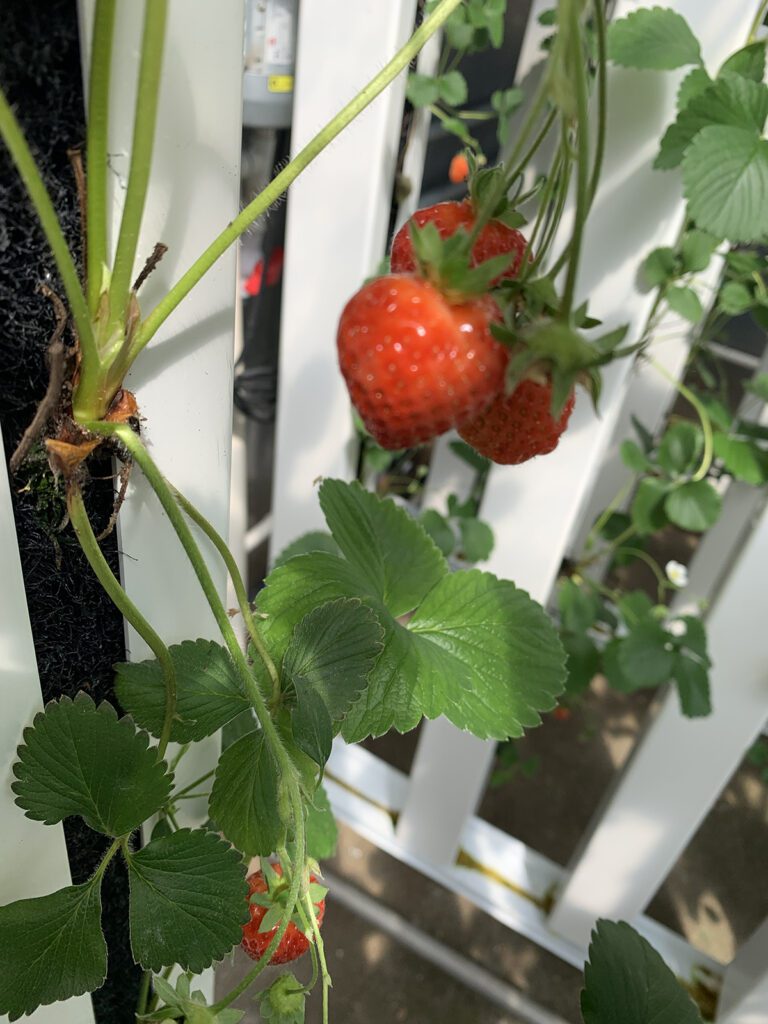
Vertical hydroponic farming has proven to provide us with more harvest from the same amount of space versus linear hydroponic gardens; the difference can be quite substantial. Making use of vertical growing space can effectively double yields in a given area when growing compact crops. Clearly, vertical hydroponics is becoming an important solution for supplying urban or remote areas with fresh healthy foods such as greens, herbs and fruits. ZipGrow is well recognized in this area and has been delivering a variety of vertical growing systems over the globe for some time now.
Naturally, we jumped at the chance to give them a go when the opportunity arose. The timing was excellent, as we had planned to do some early Spring updates in our hydroponic greenhouse and happened to have the perfect sized area available for the new ZipGrow Greenhouse System using their five foot tall ZipGrow Towers.
ZipGrow Towers
Before we get into the specifics of our ZipGrow Greenhouse System Review, let’s have a quick lesson or refresher in the basic design and function principles supporting the effectiveness of the ZipGrow Tower.
Essentially, a “C” shaped square channel (a tube with an opening running up and down) is suspended above the ground. Inside the channel, there is a folded block of artificial substrate running up and down the entire length. The substrate is similar to pond filter media:it is chemically inert, light weight, allows water to flow through and is very durable.
The plant’s roots are “sandwiched” into the media and a strip of felt wicking material, which is then inserted into the sturdy channel(s) that are supported vertically above the ground.
Plants are firmly anchored in place by the light weight substrate in the ZipGrow Tower assembly. The ZipGrow Towers are suspended straight up and down or with a few degrees of pitch. A drip emitter delivers a slow stream of recirculated nutrient solution at the top of the towers. The moisture cascades evenly down the tower through the wicking material and substrate, feeding plant roots with water and nutrients. The solution drains out the bottom and is recaptured and sent back to a reservoir for recirculation through the system. The flow can be constant or supplied intermittently with a timer.
ZipGrow Greenhouse System
In a lineral area of roughly 5’ X 12’ we operate 25 five foot ZipGrow Towers, Plant spacing is variable within each tower, as is the ability to add or remove individual towers to achieve any target planting density requirements. We planted five plants per tower (strawberries and basil), giving us a total of 125 plants in a modest lineal foot print. The height of the system is around six feet tall for using five foot towers. Note: the system can be supplied with eight foot tall towers.
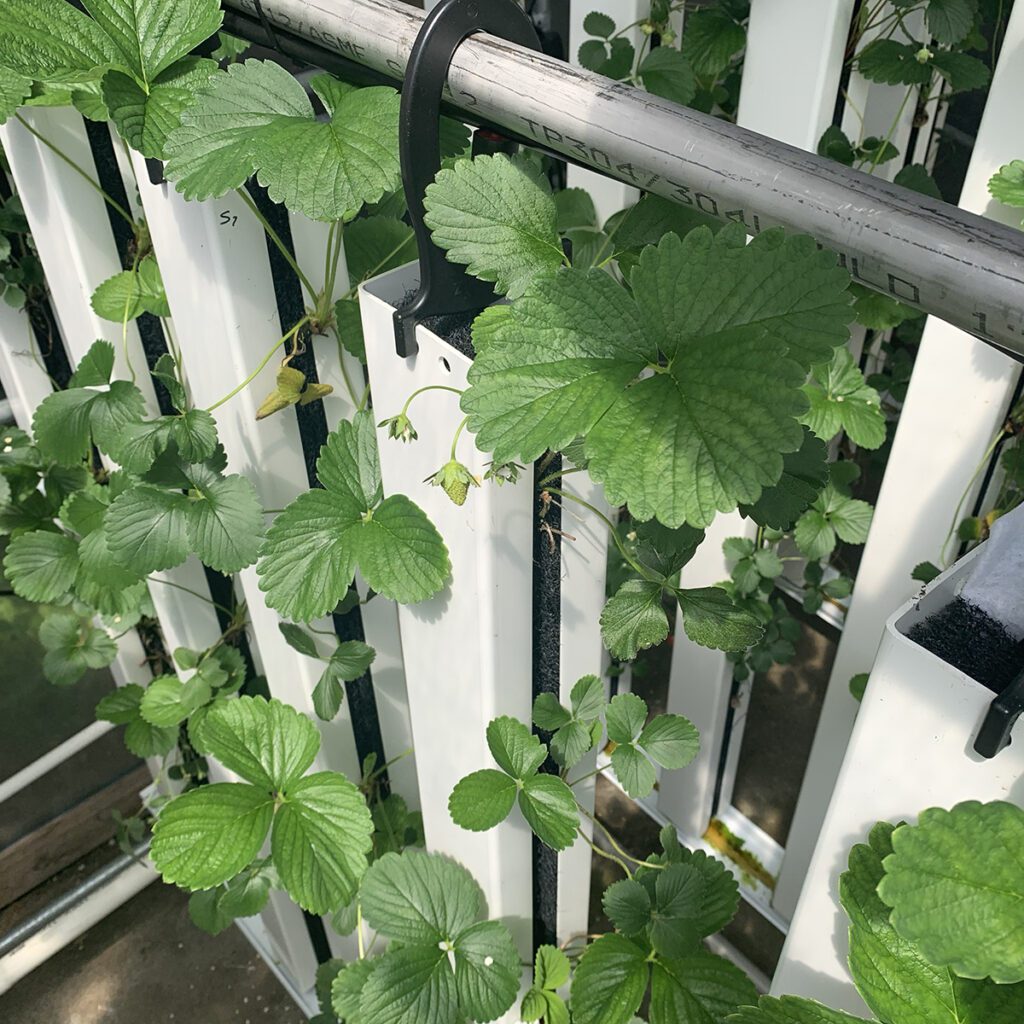
Vertical Growing System Construction
The system is delivered with everything needed for the support rack, towers, medium, overhead drip irrigation and catchment troughs. We supplied our own reservoir (water barrel), irrigation pump, irrigation main and catchment return (condensate pump).
The materials supplied are of very high quality and refinement; clearly made for a long real world service life. For example the steel tubing support system is large diameter, thick walled stainless steel.
One of the advantages we noted during assembly is that there is a level of flexibility to the system foot print. We were able to shave a few inches from the tubing to make for a perfect fit in the area (we use every inch of our small greenhouse). As a juxtaposition, this is not possible with common growing trays.
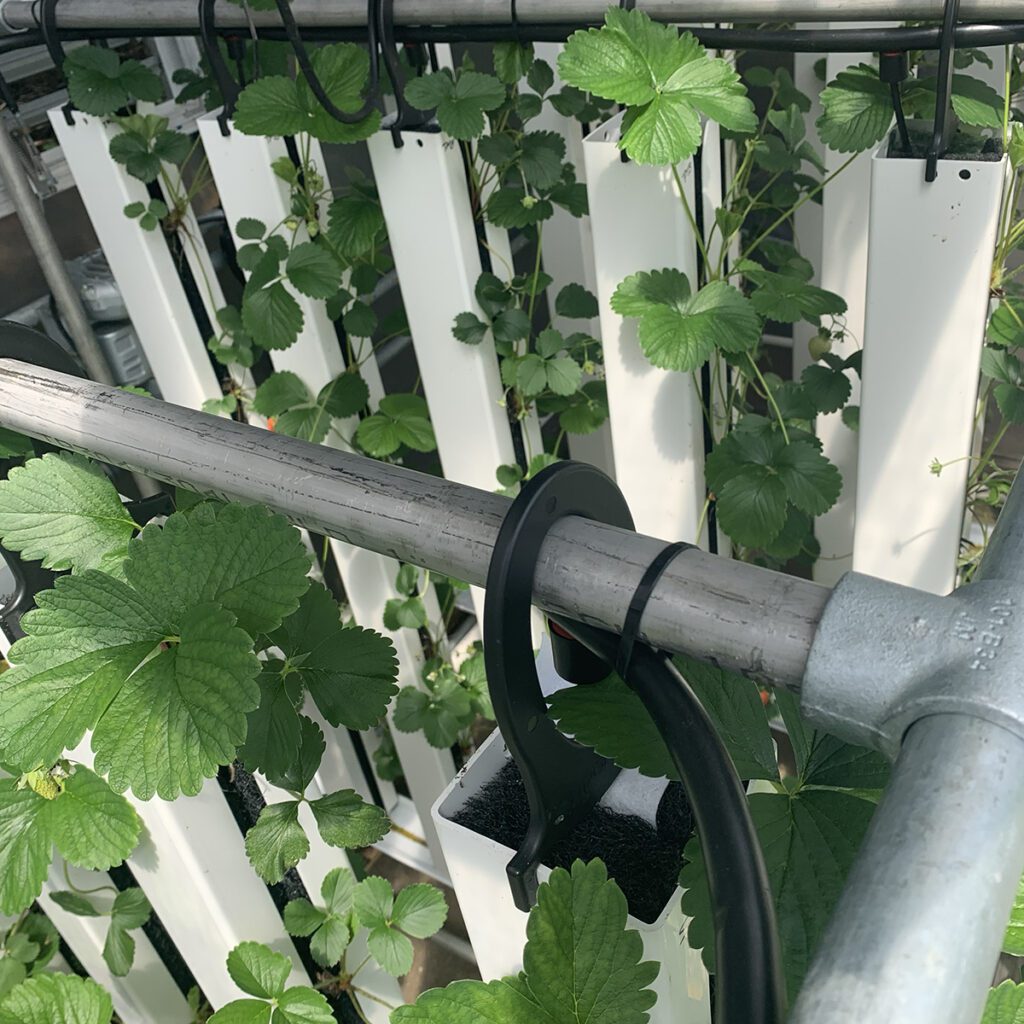
A single able bodied person with some experience building from drawings can easily assemble the metal support frame and overhead irrigation system in an afternoon. All framing members are supplied cut to the correct length–just a hex head wrench is required for the framework. We customized the nutrient return and delivery system for our application and installed the towers in an additional afternoon.
Planting ZipGrow Towers
After watching one of ZipGrow’s many helpful hands-on online videos to familiarize ourselves with transplanting or “sandwiching” young plants into the substrate and towers, we felt confident to start growing.
Having a glass sheet on an outdoor transplant table was perfect. We had lots of space to work with and the towers and substrate slid together with ease on the glass surface. It was also easy to keep clean.
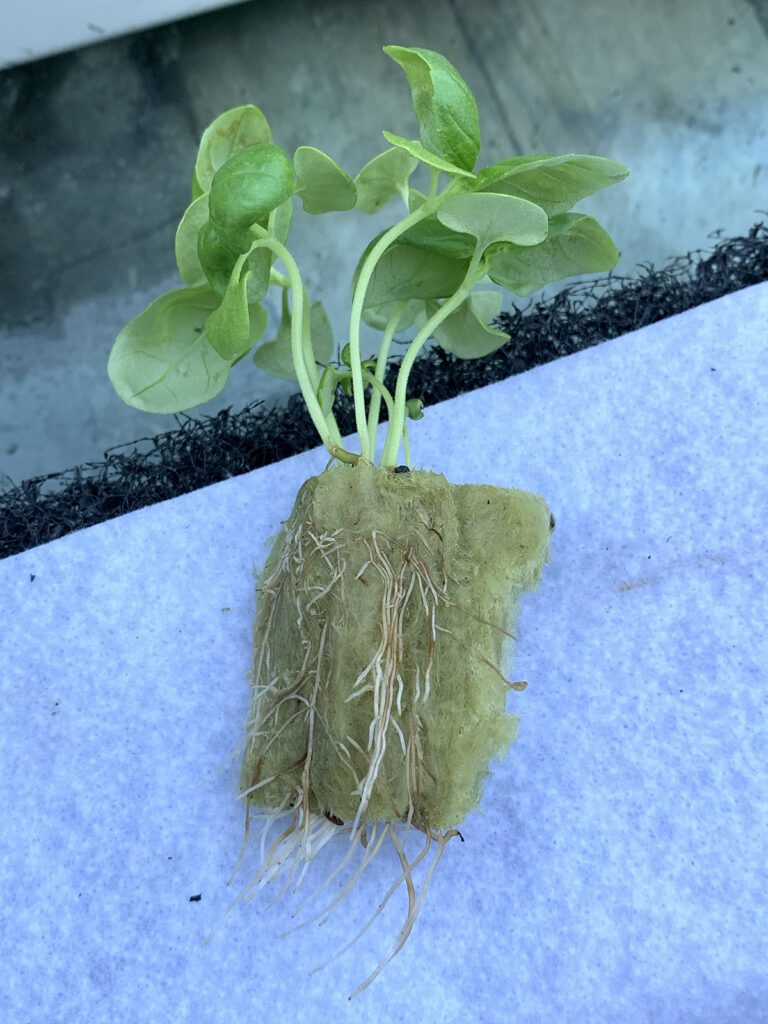
The basil transplants were started from seed in small rockwool propagation cubes and further divided at transplant. Conceivably, we could have established the plants more before planting. However, the climate in the greenhouse was perfect for transplanting and establishing the plants into the system.
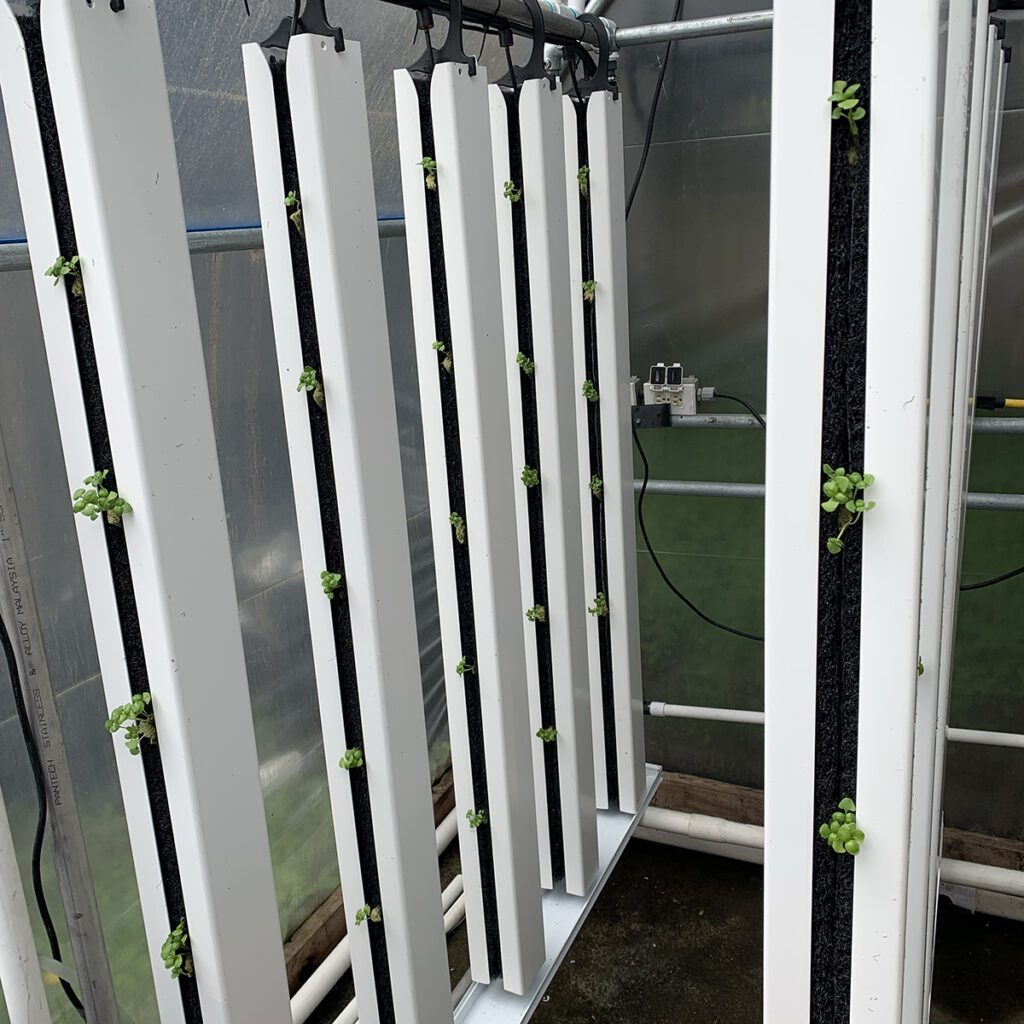
This being our first semi-serious attempt at cultivating strawberries came with a small learning curve; more to do with sourcing transplant material versus growing in the system.
Our first round of mail-order plant stock was subpar to say the least. The major Eastern Canadian plant stock supplier shall remain nameless.
Searching in our local Facebook Marketplace proved to be serendipitous. We located a few types of beautiful healthy strawberry transplants within an hour’s drive and at a great value.
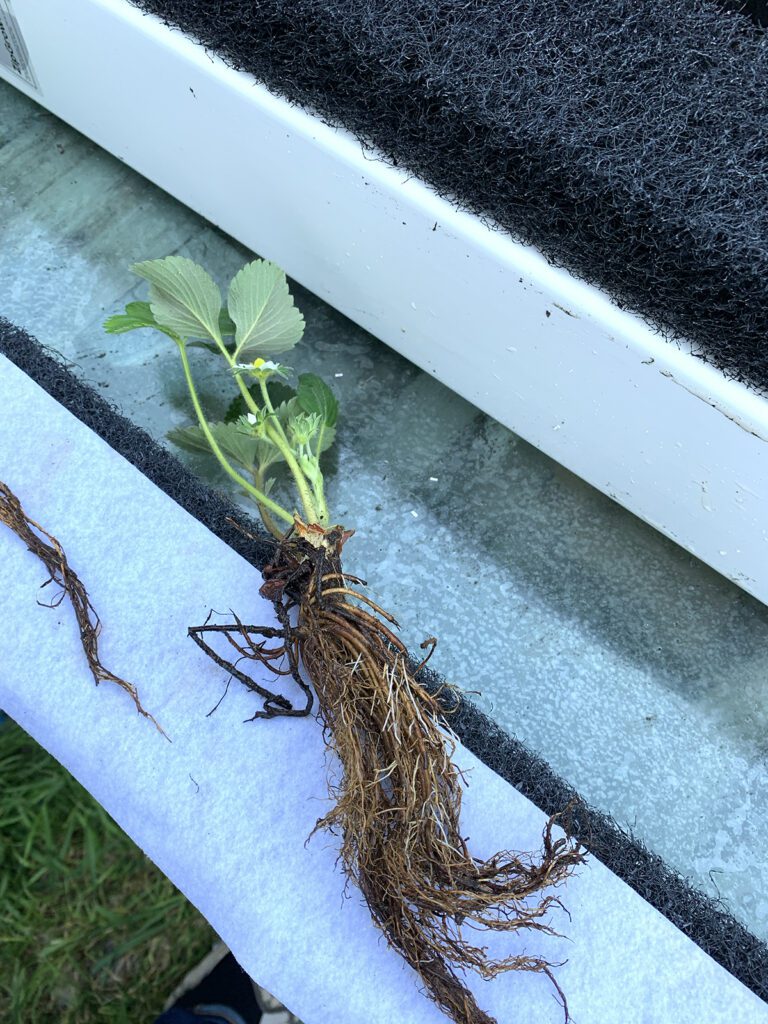
We are cultivating Albion, San Andreas and another one simply known as “T” to us.
Transplanting wasn’t terribly time consuming or laborious and went fast enough once we found our technique. If we didn’t have to rinse our strawberry stock first it would have gone faster yet. It took just a few hours to plant up 25 five foot tours, holding five plants each, for 125 plants total
Soil-Raised Transplants VS Soilless
As mentioned our basil transplants were clean, as they began in rockwool. However, our exceptionally healthy strawberry transplants came to us in living soil. We gave each plant a good dunk and rinse in a mild hydrogen peroxide solution to remove unwanted soil and to lower the microbial load present before sandwiching into the substrate and ZipGrow Towers.
ZipGrow Greenhouse System Review, Performance
We set our irrigation time to cycle 7 minutes ON and 20 minutes OFF continuously. Constant feed is an option too, however, we like to have some dry back time. Additionally if we had a leak or unwanted drips in our fresh install, this provides a small safety net before the system would run dry.
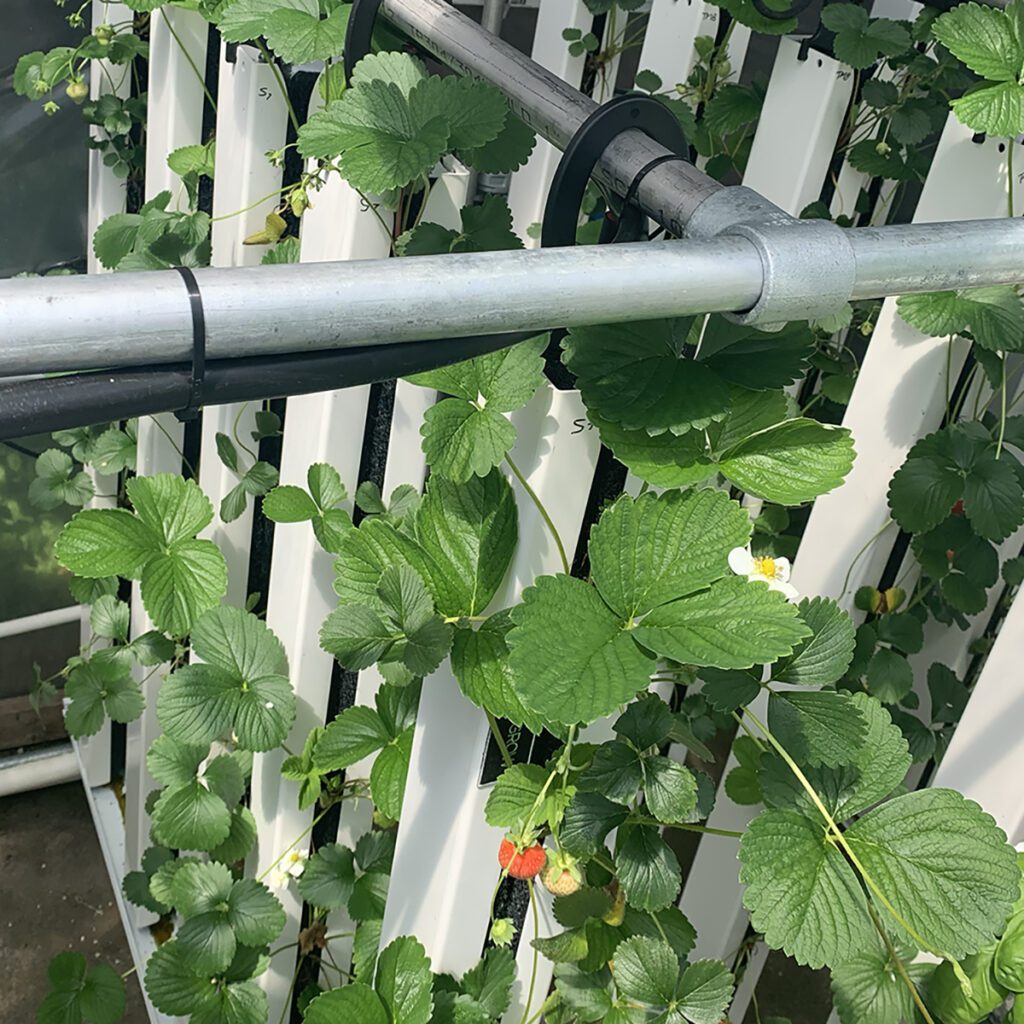
A 55 Gallon food grade water barrel serves as our reservoir cistern. We added Cultured Solutions nutrients and additives to RO filtered water for an initial EC of 1.0 with pH at 5.8 to 6.2. Using nutrients intended for hydroponics not only improves plant performance, it cuts down on potential headaches. For example, our pH remains predictable and fairly constant. Working with liquid concentrates makes mixing easy, consistent and tidy. Reservoir temperature is maintained between 65 to 75 deg F. An aquarium heater was added during the early part of the growing season. The reservoir is well aerated via with an air pump and air stones continuously.
With the system in operation for around two months now, here’s what we have to note:
-very low maintenance once operating; there’s really not much to do except maintain the reservoir (just a few minutes a day)
-water consumption is very conservative; very minimal nutrient solution is lost to evaporation
-because the plants hang vertically off of the ground there is less risk of predation from pests or animals
-light delivery remains surprisingly even and consistent up and down the plants in the five foot ZipGrow Towers; even according to our light meter.
-once established, plants really took off demonstrating exceptional health and growth rates.
-vertical grown plants seem to develop sturdier than their lineal grown counterparts; there is less stretching or stem elongation.
While we are newer to operating the system, we can say that it performs very well and is of robust construction. The substrate is reusable for several crop cycles; this is something we have yet to experience. However, that may take a while, as we plan on cropping our everbearing strawberries for a long term; there’s lots of health and vigor in the plants. Hydroponic root systems are compact and efficient, so plants becoming root bound can take a considerable period versus traditional cultivation methods.
Stay tuned for more and watch our cultivation progress daily on INSTAGRAM and FaceBook.
Meanwhile, we enjoy our daily harvests of fresh, clean and tasty strawberries and basil! Next up, a tower or two of Nasturtiums for harvesting edible flowers.
The post ZipGrow Greenhouse System Review appeared first on GROZINE.


